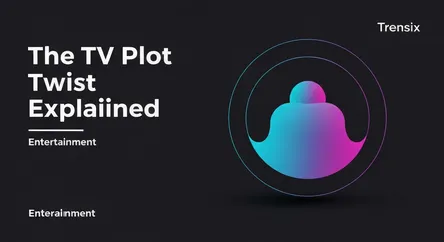Entertainment
The TV Plot Twist Explained

Explore the plot twist, a powerful narrative tool that subverts expectations. Learn why this technique is trending and how it captivates TV audiences.
What is it?
A plot twist is a literary technique and storytelling device that introduces a radical change in the direction or expected outcome of a story's plot. When executed well, it's an unforeseen revelation that challenges the viewer's understanding of the narrative. Common types include discovering a character's true, hidden identity (anagnorisis), a sudden reversal of fortune (peripeteia), or realizing the narrator has been unreliable. In television, it's a pivotal moment designed to shock and re-contextualize everything the audience thought they knew.
Why is it trending?
Plot twists are a cornerstone of modern television, especially in mystery, thriller, and drama genres that thrive on suspense. In the age of binge-watching and social media, a shocking twist generates immense online buzz, fueling fan theories, discussions, and viral moments. Shows like Westworld or The Good Place built their reputations on mind-bending revelations that kept viewers hooked week after week. This shareable, 'water cooler' effect makes twists a powerful tool for audience engagement and retention.
How does it affect people?
A successful plot twist evokes a strong emotional response, from exhilaration and shock to satisfaction or even betrayal. It transforms passive viewing into an active experience, encouraging audiences to re-watch episodes to spot foreshadowing and clues they missed. This deepens the viewer's connection to the story and its characters. By subverting expectations, plot twists make narratives more memorable and complex, cementing a show's legacy in popular culture.